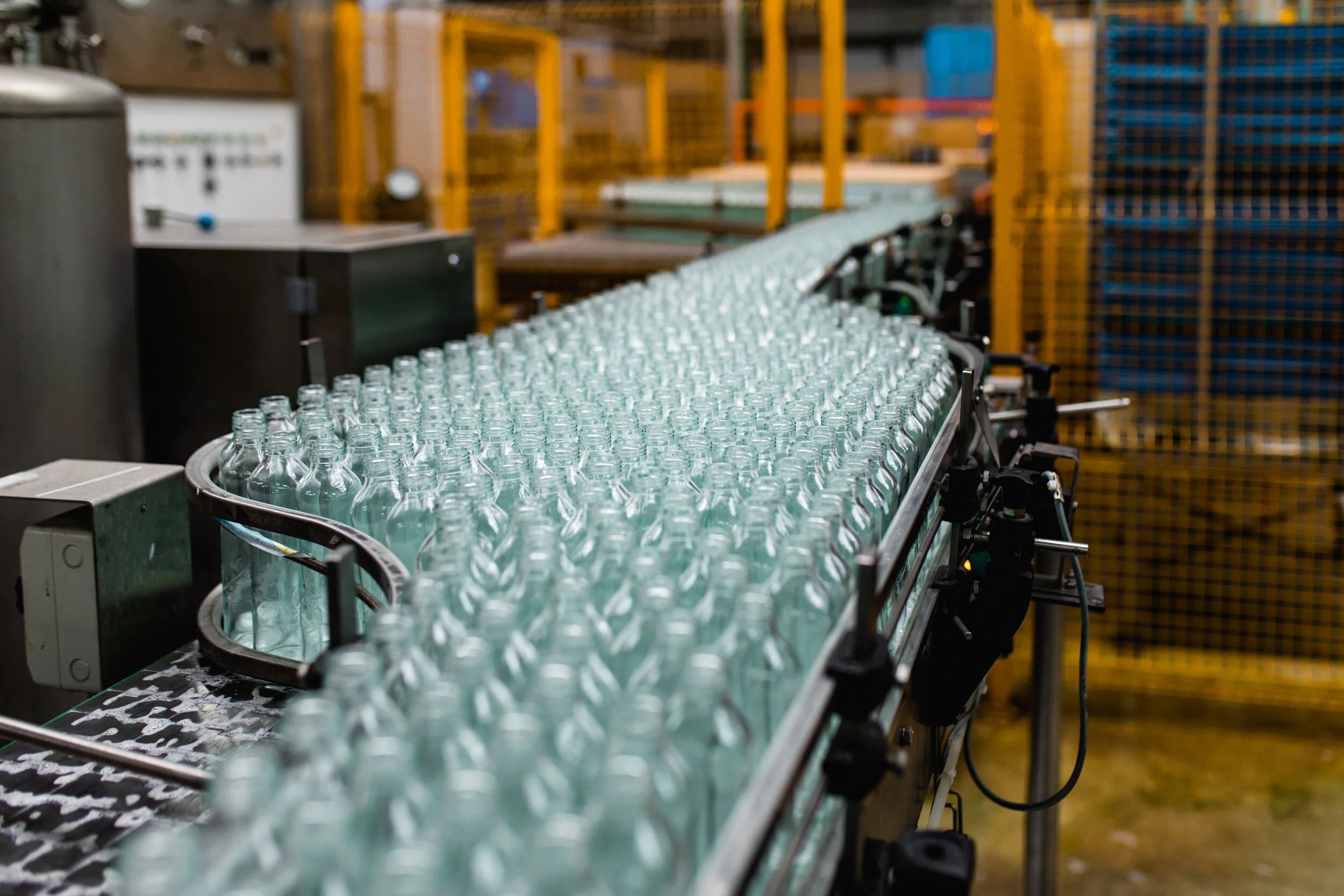
Supply Chain Flexibility
Using packaging to unlock supply chain limitations, reduce waste, increase flexibility, reduce inventory and save millions of £’s
What we did:
It might seem strange that adding a packaging material can save CO2, costs and make things more efficient but that’s often the case with postponement.
Our team identified an opportunity for one of the largest beverage companies in the World to streamline their supply chain, reduce waste and inventory, lower their CO2 impact and save money.
Situation:
An iconic UK 330ml one way glass bottle (that’s another story I’d love to address as returnables would be far more sustainable, one step at a time though) was perviously ACL (applied ceramic label) decorated by the glass bottle producer. There were three (even four at one time) different artworks printed onto the same base bottle, Diet, Regular and Zero.
Bottler - The printing of the bottles at the supplier meant that once a bottle had been printed it could only be used for that specific SKU, meaning also that the bottler had three separate incoming packaging items. Empty bottles are delicate but also very inefficient for warehousing space as they are hollow. Production plans are always changing so the planning teams were forced to keep safety stocks for each of the three packaging items to allow for peaks in demand, adding significant pressure on the warehouse and use of working capital.
Glass supplier - The CO2 footprint of ACL printing the bottles is very high as it requires the bottles to be screen printed and then pass through a furnace at over 600 degrees C, to bake the ceramic inks into the glass surface. The supplier was forced to make production campaign plans for the bottle and printing scheduling based on forecasts which were still weeks from production and came with significant inaccuracy, forcing them to also keep sizeable stocks for their customer.
Brand and Commercial - Almost as a side note, but a very significant internal driver for the project, was that the ACL printing was very limiting for the brand and marketing teams, all three products were a white print on a flint bottle filled with brown liquid, this meant that from over one metre it was very difficult to differentiate between the variants. It was also very difficult to use this pack for promotions, such as adding variable printing, due to the physical limitations of ACL printing.
Task:
Find an alternative decoration solution to allow postponement of the variant allocation, enabling the combination of all three SKU volumes into one incoming packaging item, the unprinted flint glass bottle.
Keeping in mind the requirement from the brand team to increase the number of colours which can be printed and the flexibility to activate promotions. It was also not possible to change the bottle shape, the iconic curved label panel must remain.
All this without increasing the packaging cost.
Action:
After a full assessment of available technologies to print or decorate curved surfaces, including emerging technologies such as digital object printing and stretch sleeves, the team identified shrink sleeves as the optimal solution.
A plan was developed to fully test the new decoration in a lab before line trials were conducted to reduce and impact on the bottling operation. The technology was approved, line trials conducted and passed and an implementation plan conceived to allow for a phased integration of the technology. The sleeves would first be applied by the glass supplier, on existing and unused assets, reducing the overall packaging cost, lowering the CO2 footprint and delivering marketing with the ability to better brand the different variants and provide stand out on shelf. The second phase would be, after confidence in the solution was achieved, to bring the decoration process into the bottling line, thus delivering the biggest supply chain and planning benefits. By applying the sleeve in-line the bottler would be able to combine the volumes of all three products into one bottle order, significantly increasing the forecast accuracy and reducing warehouse requirement and write-offs. There would, of course, be additional complexity for the bottling operation to to apply the sleeves but, by working closely with glass and sleeve supplier, the learnings from phase one could be leveraged. Planners and buyers would also need to order printed shrink sleeves but these are low cost, quick turn-around and space efficient components.
Result:
The project was implemented to phase one with the option of phase two when resources become available. Marketing were delighted with the result and these SKU’s became the poster child and hero pack for the brand. The bottle supplier was able to leverage their unused assets and deliver a lower cost product to their customer with more flexibility on variant split and reduced delivery time. The bottler saved a seven figure £ on packaging costs year on year with the potential for the same again when bringing the sleeving operation in-line.
See for yourself, pop down to your local pub and ask for ‘a real Coke in a bottle please’.


